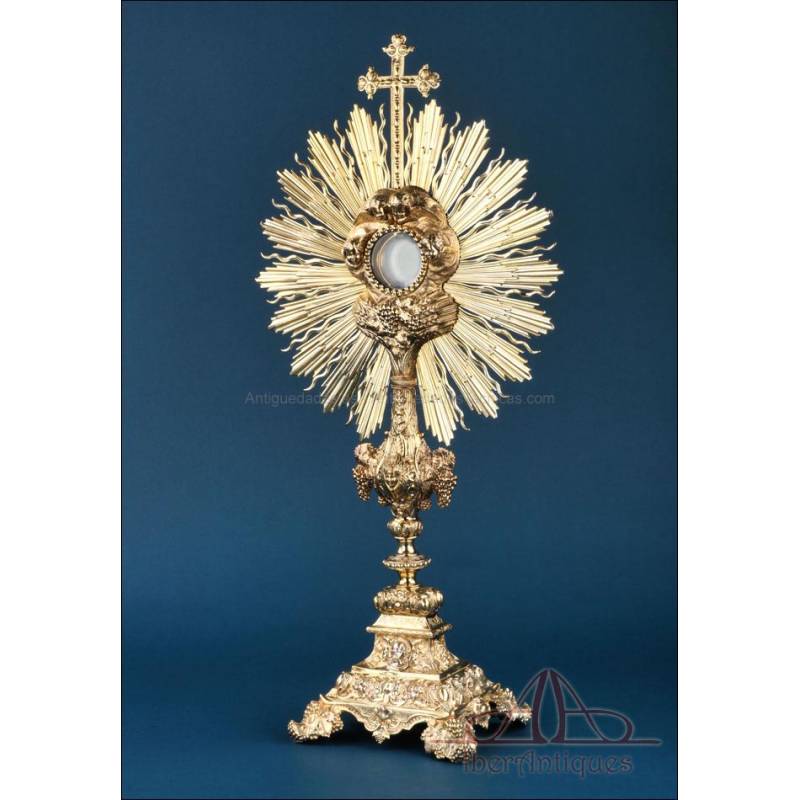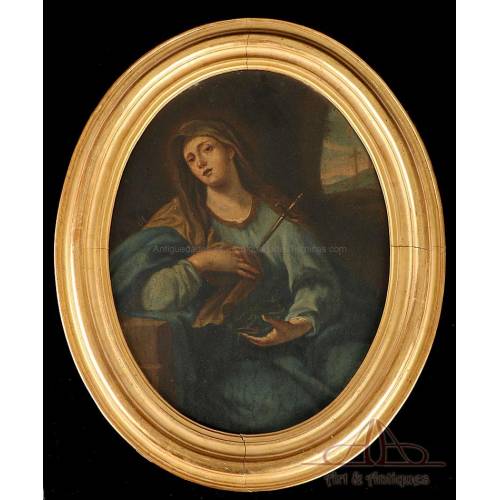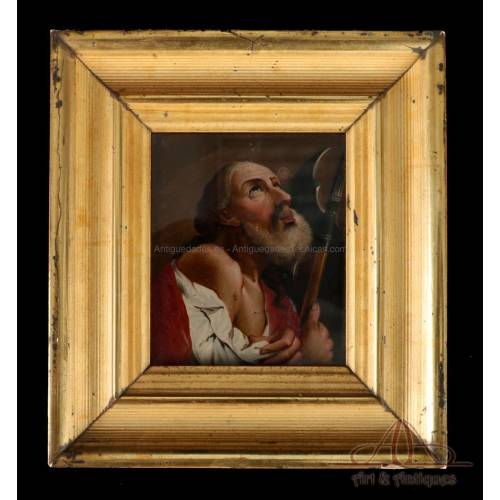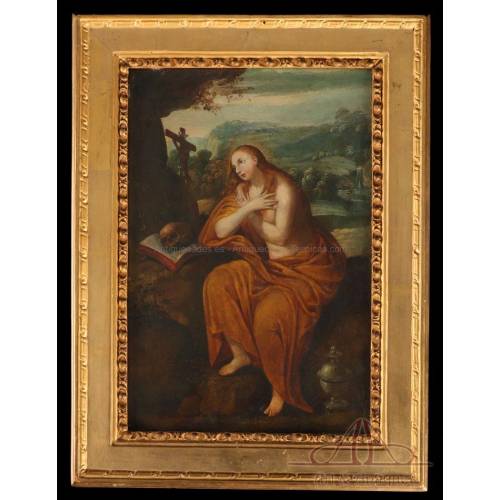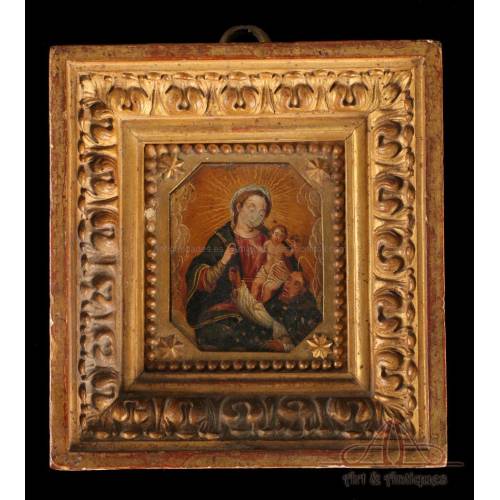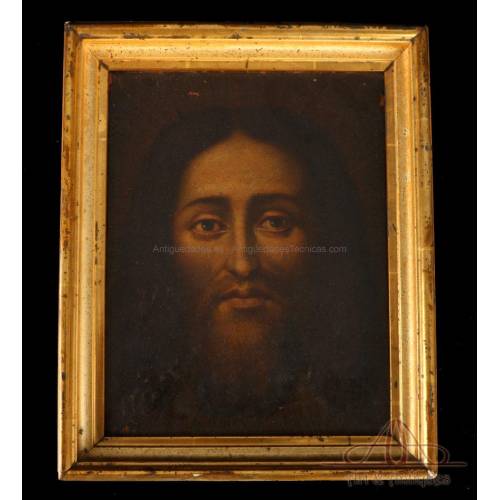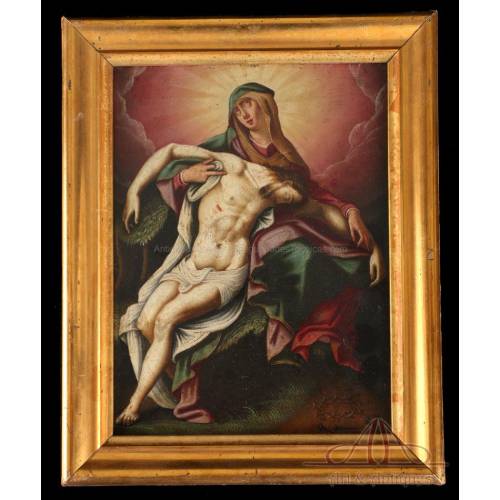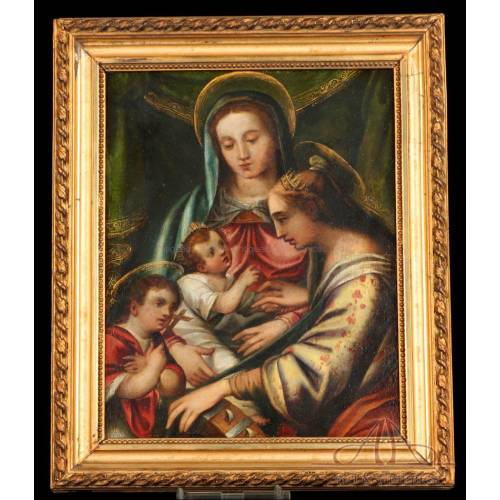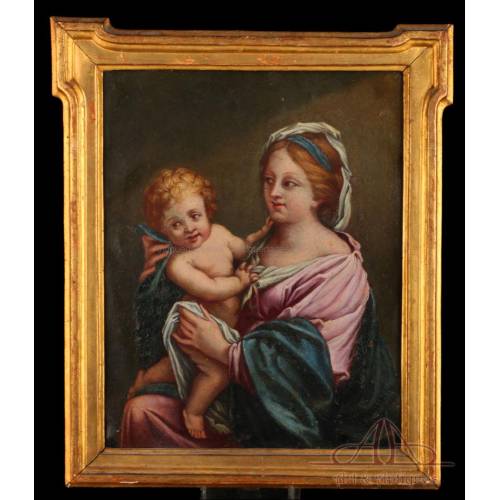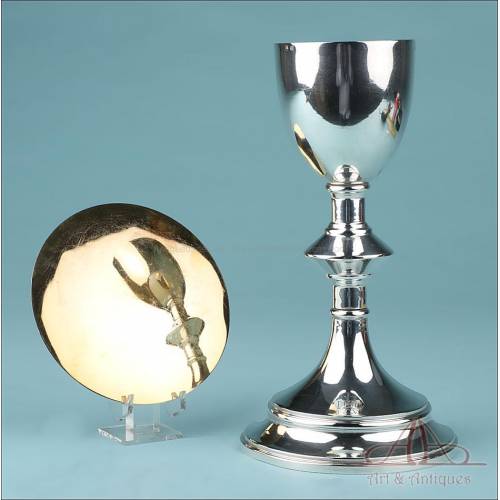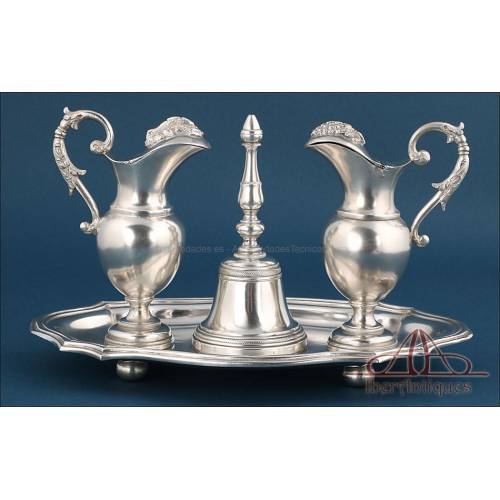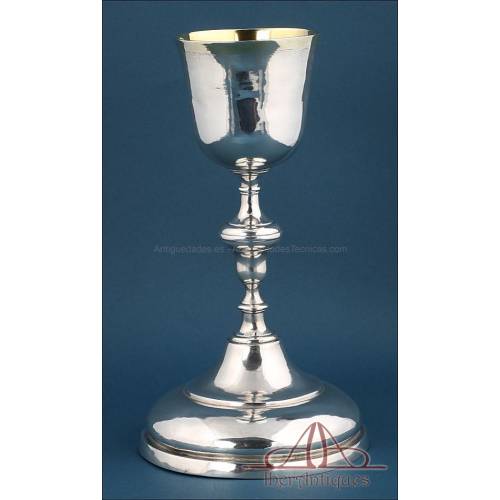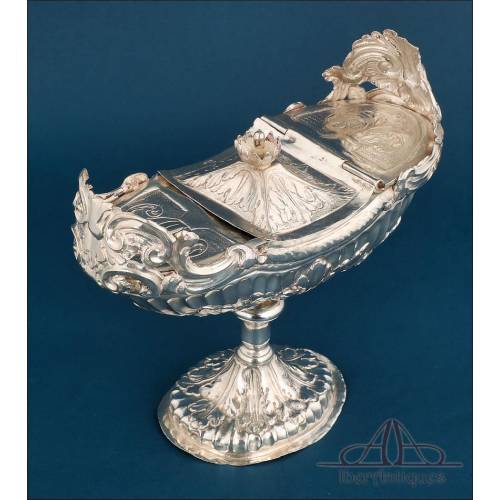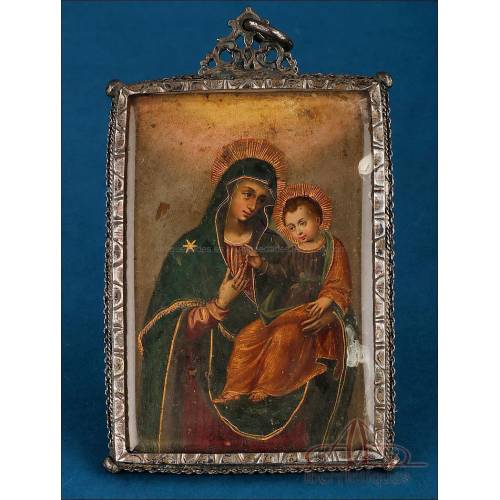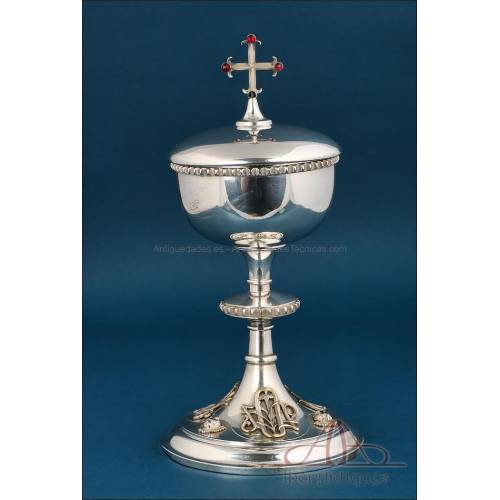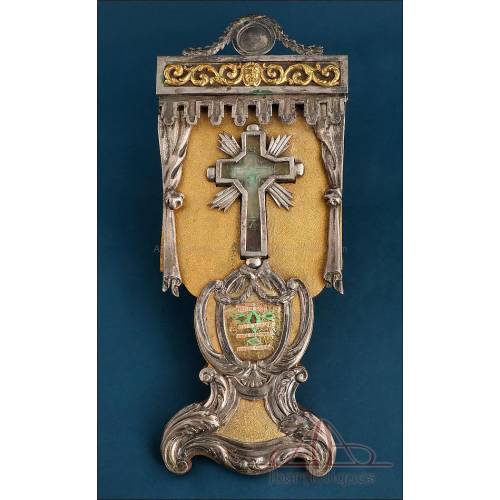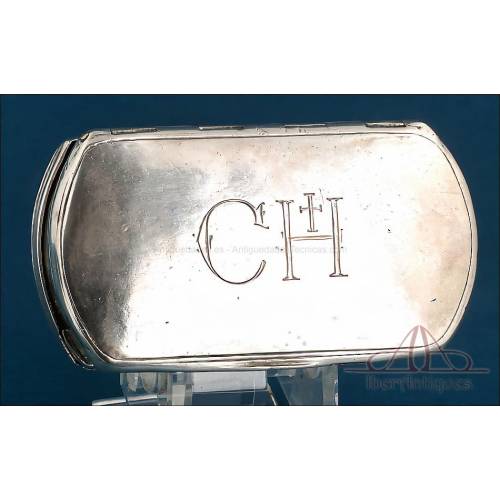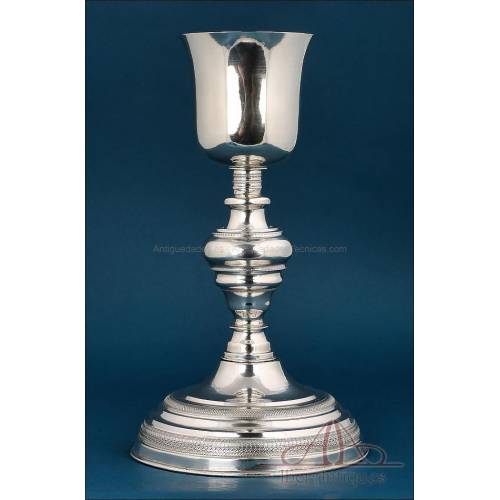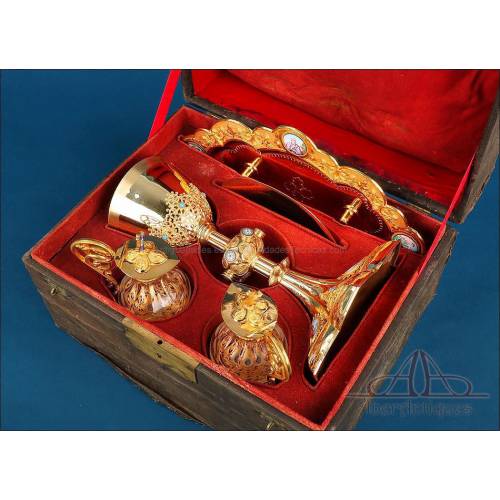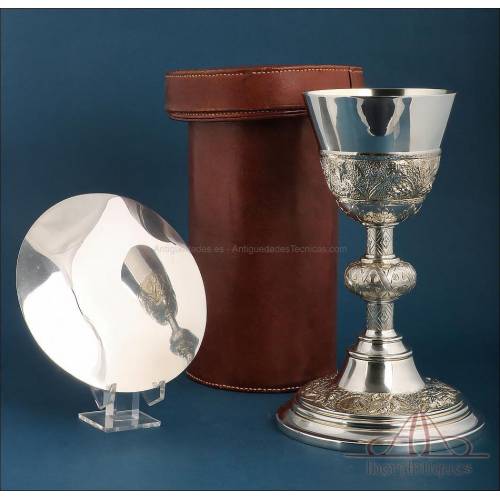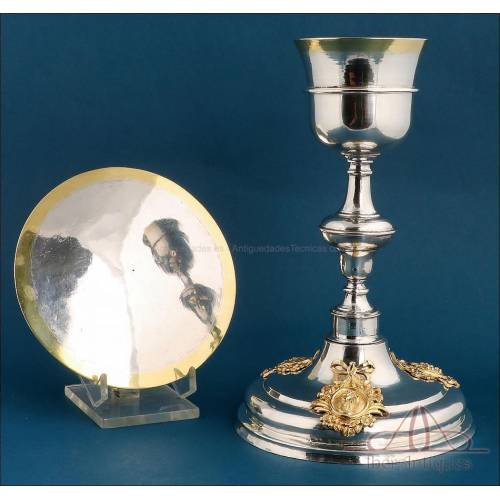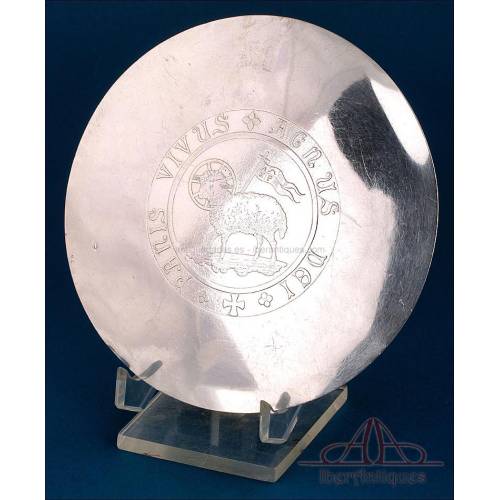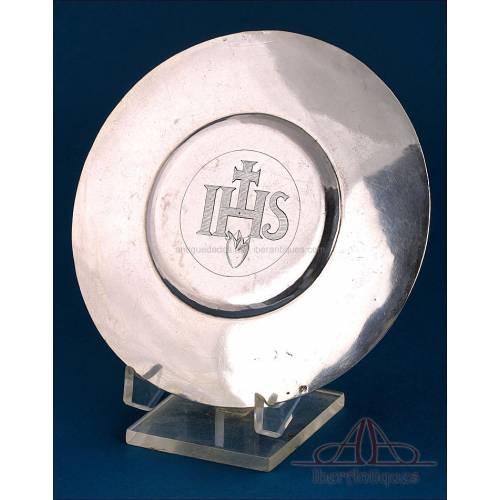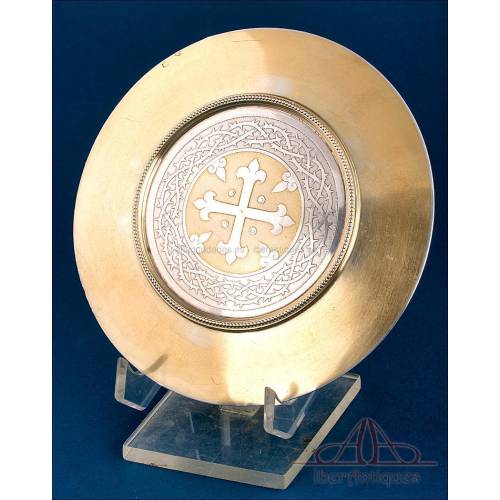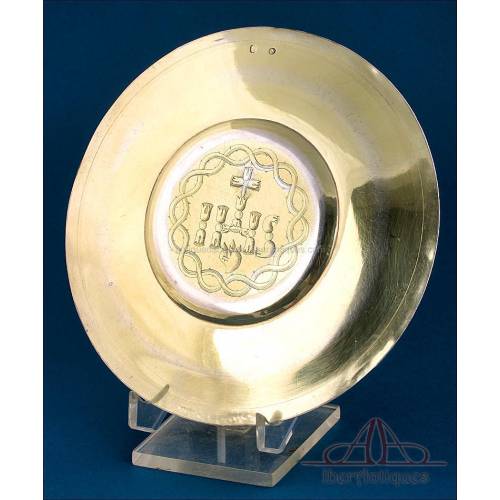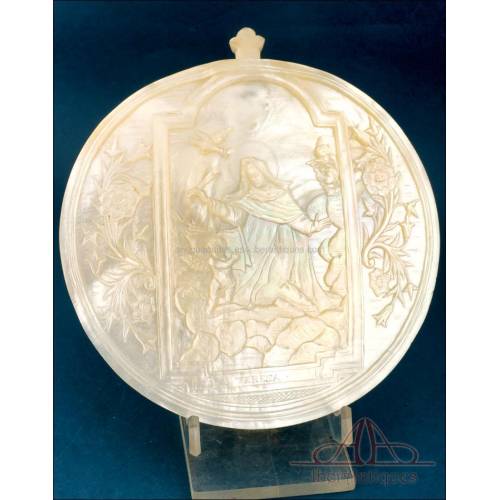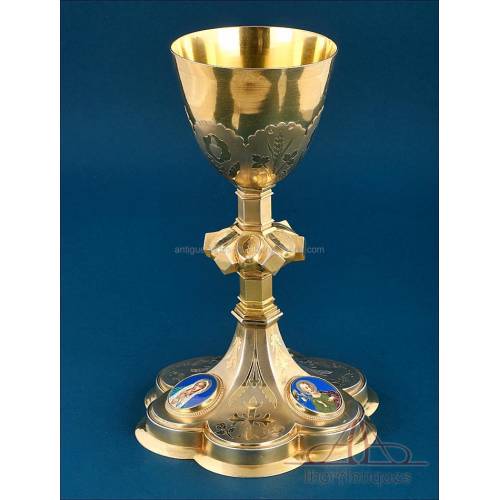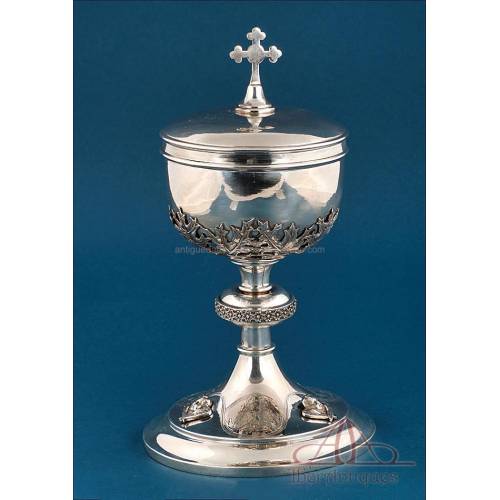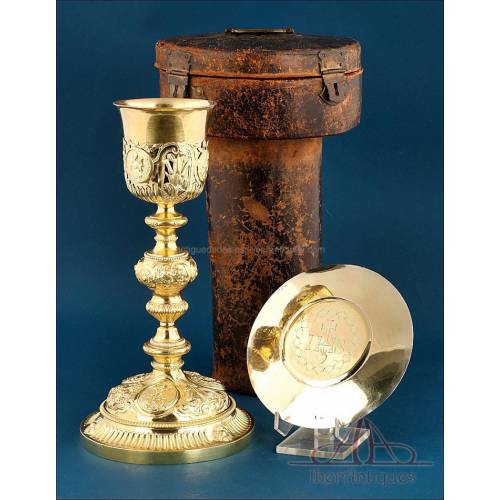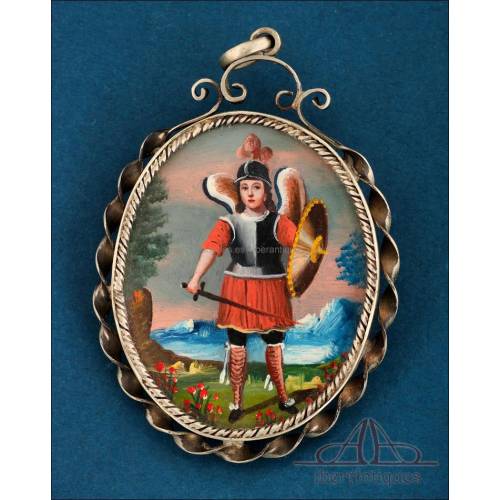E-291
Antique Gilt Silver Monstrance. Complete. 28 in. France, 19th Cent.
19th-century French gilt silver monstrance. 28 in. tall, Baroque style, richly decorated with cherubs, grapes, vines, and sacred faces.
Antique Gilt Silver Monstrance. Complete. 28 in. France, 19th Century
This magnificent and solemn antique monstrance in gilded silver, made in France during the nineteenth century. A truly spectacular piece that stands out both for its large size and for the exquisite decorative richness of each of its elements. With an impressive height of 71 centimeters and a considerable weight of 1560 grams, this masterpiece of sacred art is entirely crafted in finely gilded silver, giving it a warm and majestic luminosity.
During the nineteenth century, France experienced a significant revival of liturgy and the production of sacred objects, as part of the neo-Gothic and neo-Baroque movements that sought to restore the solemnity and beauty of traditional Catholic rites after the upheavals of the Revolution. The monstrances made during this period combined the goldsmithing techniques inherited from the Ancien Régime with the rich and emotional iconography of the Baroque, resulting in pieces like the one presented here.
The style is clearly Baroque, exuberant, theatrical, and deeply symbolic. The ostensorium or "sun," which measures 34 cm in diameter, radiates energy and spirituality. From its circular center emerge vigorous straight and flamed rays that evoke divine light, while at its core stands an impressive scene of cherub masks emerging among the clouds, tenderly holding the lunette, which is preserved in perfect condition. This lunette is fully functional and can hold hosts up to 5.5 cm in diameter, an important detail for current liturgical use.
The symbolism present in this monstrance is deeply Eucharistic: the solar rays emanating from the lunette represent Christ as the light of the world, the clusters of grapes and vine leaves allude to the consecrated wine, and the angels guarding the lunette evoke the perpetual celestial adoration of the Blessed Sacrament. The use of gilded silver is no coincidence: it reflects the tradition of employing the noblest materials to contain the sacred, following the biblical heritage of the Ark of the Covenant.
The central stem, connecting the sun to the base, is profusely decorated with Eucharistic motifs: clusters of grapes and vine leaves, all carefully molded and repoussé-worked in silver. In the center of the floral knop appears the delicate face of a winged cherub, symbolizing purity and adoration. This design reinforces the Eucharistic iconography with a clear catechetical intention, teaching and moving us through its form.
The base, shaped like a truncated pyramid with claw supports resting on clusters of grapes and vine leaves, completes the ensemble with impressive repoussé decoration. Each side presents a medallion: on one, the serene and majestic face of Jesus Christ; on the opposite, the sweet and contemplative face of the Virgin Mary. Between them unfolds an ornamental repertoire of vegetal and symbolic motifs, worked with extraordinary meticulousness. The small angel heads, volutes, scrolls, and grape clusters seem to emerge from the surface, giving the monstrance a fascinating three-dimensionality.
The cross crowning the ensemble is richly chiseled, with floral designs at the ends. It rises as the perfect crowning of this monstrance, vertically extending the gesture of adoration and elevation conveyed by the entire piece.
Upon examination of the monstrance, I was able to locate two hallmarks: one on the cross itself and another among the rays of the sun. Both confirm its execution in silver. I am convinced that there must be at least a third hallmark on the base, but among so much decoration it is like looking for Waldo: I have not yet been able to find it, although it is surely there, camouflaged among so much repoussé filigree.
The state of conservation is very good, with no missing parts, all original elements intact, and the gilding in excellent condition. The minimal signs of the passage of time do not detract from its beauty but instead add authenticity and character. A piece of great artistic and devotional value, perfect to be reintroduced into the Church and once again serve in worship in a parish, especially for the exposition of the Blessed Sacrament.
This type of monstrance was commonly used in Corpus Christi processions, Eucharistic adorations, and other solemn ceremonies. Its presence on the altar visually reinforced the centrality of the Eucharist in Christian life. Many of them, like this one, were made by highly specialized goldsmiths collaborating with religious workshops and parishes throughout France.
Today, monstrances like this are coveted by collectors, liturgical antique dealers, and religious communities alike, not only for their liturgical use but also as material testimonies of the faith and art of past eras.
Ideal for returning it to liturgical use and placing it in a place of honor within a church or chapel.
A unique opportunity to acquire a jewel of nineteenth-century French Baroque sacred art!
Dimensions: Height: 71 cm (27.95 in)
Sun: 34 cm (13.39 in) wide
Base: 20 x 16 cm (7.87 x 6.3 in)
Weight: 1560 g

